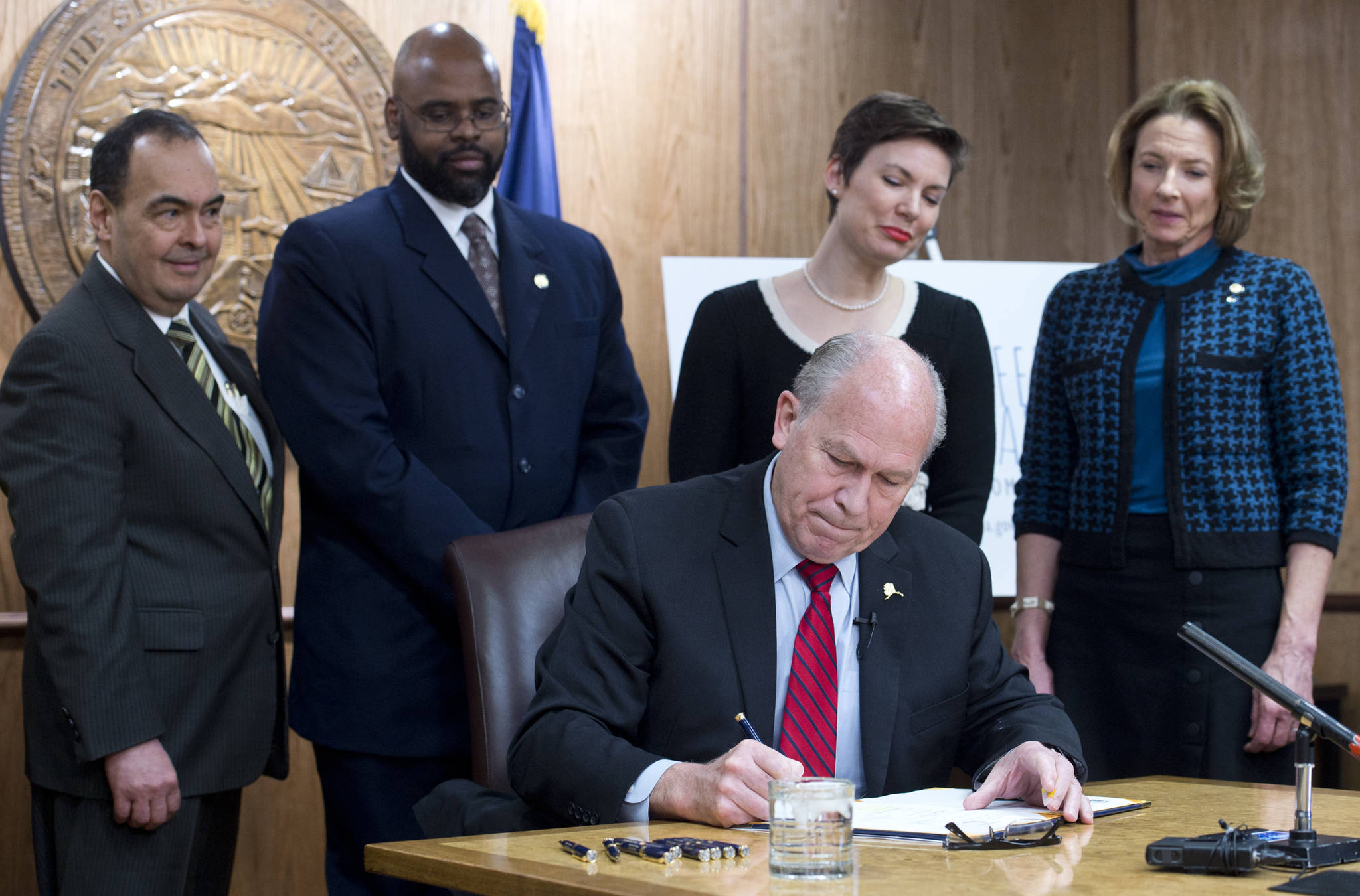Lawmakers called Senate Bill 91 a tourniquet, a fire extinguisher and a defibrillator.
The state’s top doctor said the metaphor isn’t important. What is important is what the bill does: Save lives.
SB 91, signed by Gov. Bill Walker on Tuesday, extends through 2021 the ability of Dr. Jay Butler, head of the Alaska Division of Public Health, to allow pharmacists to distribute Naloxone (commonly called Narcan) without a prescription.
Butler had been granted that power temporarily by a disaster declaration from Walker earlier this year.
“We’ve heard a lot of analogies … but this is a gateway to life and recovery,” Butler said.
Naloxone, administered to someone who is overdosing on painkillers, can stop the overdose within seconds, giving ambulance crews time to respond and save a person’s life.
“This gives us an opportunity to bring them back,” said Sen. Donny Olson, D-Nome.
In addition to serving in the Legislature, Olson is a doctor.
To date, Butler said, the state has distributed 1,200 emergency kits containing Naloxone. The kits have been paid for with a federal grant of more than $4 million. SB 91 allows Butler to continue that program.
“We hope to be able to put together 1,000 or more of them,” he said.
Each kit — Butler carried one Tuesday — contains instructions, latex gloves, and Naloxone nasal spray. The spray works even if the recipient isn’t breathing, Butler said.
SB 91 passed remarkably quickly through the House and the Senate before reaching the governor. Walker introduced the bill March 10, and it returned to him 10 days later.
“Both the House and the Senate were making this a priority along with your administration,” said Speaker of the House Bryce Edgmon, D-Dillingham.
In 2015, the latest year for which full statistics are available, 126 Alaskans died of drug-induced deaths, according to the Vital Statistics Section of the Alaska Department of Health and Social Services. That figure has risen 36 percent since 2006, according to Vital Statistics figures.
Drugs kill fewer Alaskans than firearms do (176 in 2015), or alcohol, which killed 160. Cancer, the leading cause of death here, killed 962 Alaskans in 2015.
Death rate is only one effect of what lawmakers have called an epidemic of drug addiction. Addiction drives crime and other social harm in addition to its health effects. Last week, in the latest example, someone broke into the SEARHC clinic in Haines and stole its entire supply of addictive painkillers.
SB 91 does not address criminal issues, nor does it touch on addiction and recovery, two topics that are being addressed by other pieces of legislation this year.
House Bill 159, which affects the prescription of opioid painkillers, is in a House committee, and Edgmon said Tuesday that additional legislation is expected.
“We’re making progress,” Butler said. “There’s still much to do … but every little bit helps.”
• Contact reporter James Brooks at james.k.brooks@juneauempire.com or call 419-7732.

